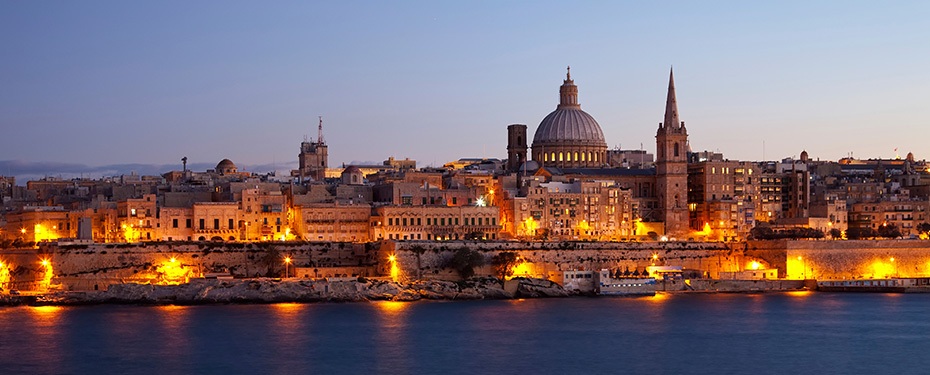Maltese cardinal number convey the "how many" they're also known as "counting numbers," because they show quantity.
For numbers between 2 and 10, the noun that
follows is plural
|
The number on its own, not following a noun.
|
When the number is in front of a noun and is in
the plural form.
|
When the following noun is made up of one
syllable, you add a –t to the number and add an -i to the noun that
starts with a double consonant in the plural.
|
0
|
Żero
|
||
1
|
Wieħed (m)
Waħda (f)
|
||
2
|
Tnejn
|
Żewġ / ġiex
|
Żewġt
|
3
|
Tlieta
|
Tliet
|
Tlett / Tlitt
|
4
|
Erbgħa
|
Erba’
|
Erbat
|
5
|
Ħamsa
|
Ħames
|
Ħamest
|
6
|
Sitta
|
Sitt
|
Sitt
|
7
|
Sebgħa’
|
Seba’
|
Sebat
|
8
|
Tmienja
|
Tmien
|
Tmint
|
9
|
Disgħa
|
Disa’
|
Disat
|
10
|
Għaxra
|
Għaxar
|
Għaxart
|
Cardinal Numbers
(In-numri Kardinali):
1.
Wieħed
Noun
+ Number
Mejda + Waħda -> Mejda waħda (feminine)
(one table)
Mejda + Waħda -> Mejda waħda (feminine)
(one table)
Wieħed
+ Qamar -> Wieħed qamar (masculine)
(one moon)
(one moon)
2.
Tnejn
Żewġ idejn (two hands) = number + noun in the plural form
“Tnejn” changes to “Żewġ”.
Żewġ is always used instead of “Tnejn”
when we talk about two things or things in pairs.
“Tnejn” changes to “Żewġ”.
Żewġ is always used instead of “Tnejn”
when we talk about two things or things in pairs.
Żewġt itfal
(two children)
(when a noun starts with two consonants we add an “i” (prefix) to the beginning of a noun
(two children)
(when a noun starts with two consonants we add an “i” (prefix) to the beginning of a noun
and “t” (suffix)
to the end of a number)
3. Tlieta
3. Tlieta
tliet subien (three sons)
= number + noun in the plural form
(“a”
drops)
5. Ħamsa
Ħames tiġiġiet
(5 chickens) = number + noun in the plural form
4 - Erbgħa’
7 -
Sebgħa’ - apostrophe instead of “għ”
9 - Disgħa’
2
to 10 - number + noun in PLURAL
For numbers between 11 and 99, the noun that
follows is singular
|
||
11
|
Ħdax
|
|
12
|
Tnax
|
|
13
|
Tlettax
|
|
14
|
Erbatax
|
|
15
|
Ħmistax
|
|
16
|
Sittax
|
|
17
|
Sbatax
|
|
18
|
Tmintax
|
|
19
|
Dsatax
|
|
Numbers
between 11 and 19 take the participle “- il” before the noun in the singular form:
Ħdax-il ħmar (11 donkeys)
Tlettax-il raġel (13 men)
Sbattax-il balloon (17 balls)
Tlettax-il raġel (13 men)
Sbattax-il balloon (17 balls)
Dsatax-il tiffieħa (19 apples)
From 20 onwards, first we read the last digit and
then the digit preceding it
|
||
20
|
Għoxrin (21
– Wieħed u għoxrin)
|
|
30
|
Tlietin (
38 – Tmienja u tlietin)
|
|
40
|
Erbgħin (
42 – Tnejn u Erbgħin)
|
|
50
|
Ħamsin
|
|
60
|
Sittin
|
|
70
|
Sebgħin
|
|
80
|
Tmenin
|
|
90
|
Disgħin
|
|
100
|
Mija
|
|
* 100 - one hundred - MIJA
(when not followed by a noun)
(when not followed by a noun)
103 - mija u tlieta
105 - mija u ħamsa
109 - mija u disgħa
* 100 - one hudred - MITT
(when followed by a noun)
sitt mitt barranin (600 foreigners)
disgħa mitt dar (900 houses)
disgħa mitt dar (900 houses)
* When writing a numbers ending with -01 the noun
comes between the hundred and the third digit:
mitt fjura u waħda (101 flowers)
mitt fjura u waħda (101 flowers)
Mitt tifel u wieħed (101 boys)
200
|
Wittejn
|
300
|
Tliet mija
|
400
|
Erba mija
|
1000
|
Elf
|
2000
|
Elfejn
|
3000
|
Tliet elef
|
4000
|
Erbat elef
|
1.000.000
|
Miljun
|
|
The Ordinal Numbers
(In-Numri Ordinali) |
||
|
1.
|
first
|
l-ewwel
|
|
2.
|
second
|
it-tieni
|
|
3.
|
third
|
it-tielet
|
|
4.
|
fourth
|
ir-raba’
|
|
5.
|
fifth
|
il-ħames
|
|
6.
|
sixth
|
is-sitt
|
|
7.
|
seventh
|
is-seba’
|
|
8.
|
eighth
|
it-tmien
|
|
9.
|
ninth
|
id-disa’
|
|
10.
|
tenth
|
i-għaxar
|

No comments:
Post a Comment